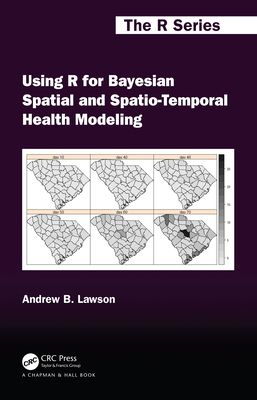Modeling Infectious Diseases in Humans and Animals
暫譯: 人類與動物傳染病建模
Matt J. Keeling, Pejman Rohani
- 出版商: Princeton University Press
- 出版日期: 2007-10-28
- 售價: $4,500
- 貴賓價: 9.5 折 $4,275
- 語言: 英文
- 頁數: 408
- 裝訂: Hardcover
- ISBN: 0691116172
- ISBN-13: 9780691116174
-
相關分類:
機率統計學 Probability-and-statistics
海外代購書籍(需單獨結帳)
買這商品的人也買了...
-
 Intel 系列微處理器-架構、規劃與介面, 8/e (The Intel Microprocessors, 8/e)
Intel 系列微處理器-架構、規劃與介面, 8/e (The Intel Microprocessors, 8/e)$810$770 -
 $594PCI Express 體系結構導讀
$594PCI Express 體系結構導讀 -
 ASP.NET MVC 5 網站開發美學
ASP.NET MVC 5 網站開發美學$780$616 -
 $594深入淺出 MySQL:數據庫開發、優化與管理維護, 2/e
$594深入淺出 MySQL:數據庫開發、優化與管理維護, 2/e -
 Redis 實戰
Redis 實戰$414$393 -
 測試驅動開發:使用 Python (Test-Driven Development with Python)
測試驅動開發:使用 Python (Test-Driven Development with Python)$880$695 -
 超圖解物聯網 IoT 實作入門 - 使用 JavaScript/Node.JS/Arduino/Raspberry
超圖解物聯網 IoT 實作入門 - 使用 JavaScript/Node.JS/Arduino/Raspberry$699$594 -
 Linux Shell 程式設計實力養成:225個實務關鍵技巧徹底詳解, 2/e
Linux Shell 程式設計實力養成:225個實務關鍵技巧徹底詳解, 2/e$490$382 -
 $280軟技能代碼之外的生存指南 (Soft Skills : The software developer's life manual)
$280軟技能代碼之外的生存指南 (Soft Skills : The software developer's life manual) -
 $473領域驅動設計 : 軟件核心複雜性應對之道
$473領域驅動設計 : 軟件核心複雜性應對之道 -
.jpg) Python + Spark 2.0 + Hadoop 機器學習與大數據分析實戰
Python + Spark 2.0 + Hadoop 機器學習與大數據分析實戰$680$530 -
 TensorFlow + Keras 深度學習人工智慧實務應用
TensorFlow + Keras 深度學習人工智慧實務應用$590$460 -
 寫程式前就該懂的演算法 ─ 資料分析與程式設計人員必學的邏輯思考術 (Grokking Algorithms: An illustrated guide for programmers and other curious people)
寫程式前就該懂的演算法 ─ 資料分析與程式設計人員必學的邏輯思考術 (Grokking Algorithms: An illustrated guide for programmers and other curious people)$390$308 -
 SQL Server 效能調校 (暢銷修訂版)
SQL Server 效能調校 (暢銷修訂版)$450$383 -
 $374Keras 快速上手:基於 Python 的深度學習實戰
$374Keras 快速上手:基於 Python 的深度學習實戰 -
 $857深度學習
$857深度學習 -
 實戰 TensorFlow|Google 深度學習系統
實戰 TensorFlow|Google 深度學習系統$480$379 -
 Deep Learning|用 Python 進行深度學習的基礎理論實作
Deep Learning|用 Python 進行深度學習的基礎理論實作$580$458 -
 這樣O那樣X 一看就懂的 UI 設計與資訊編排技巧
這樣O那樣X 一看就懂的 UI 設計與資訊編排技巧$380$323 -
 Python 網路爬蟲實戰
Python 網路爬蟲實戰$490$245 -
 初探機器學習|使用 Python (Thoughtful Machine Learning with Python)
初探機器學習|使用 Python (Thoughtful Machine Learning with Python)$480$379 -
 鳳凰專案|看 IT部門如何讓公司從谷底翻身的傳奇故事
鳳凰專案|看 IT部門如何讓公司從谷底翻身的傳奇故事$480$379 -
 SQL Server 與 R 開發實戰講堂
SQL Server 與 R 開發實戰講堂$680$578 -
 R 資料科學 (R for Data Science)
R 資料科學 (R for Data Science)$780$616 -
 ES6 標準入門, 3/e
ES6 標準入門, 3/e$594$564
相關主題
商品描述
For epidemiologists, evolutionary biologists, and health-care professionals, real-time and predictive modeling of infectious disease is of growing importance. This book provides a timely and comprehensive introduction to the modeling of infectious diseases in humans and animals, focusing on recent developments as well as more traditional approaches.
Matt Keeling and Pejman Rohani move from modeling with simple differential equations to more recent, complex models, where spatial structure, seasonal "forcing," or stochasticity influence the dynamics, and where computer simulation needs to be used to generate theory. In each of the eight chapters, they deal with a specific modeling approach or set of techniques designed to capture a particular biological factor. They illustrate the methodology used with examples from recent research literature on human and infectious disease modeling, showing how such techniques can be used in practice. Diseases considered include BSE, foot-and-mouth, HIV, measles, rubella, smallpox, and West Nile virus, among others. Particular attention is given throughout the book to the development of practical models, useful both as predictive tools and as a means to understand fundamental epidemiological processes. To emphasize this approach, the last chapter is dedicated to modeling and understanding the control of diseases through vaccination, quarantine, or culling.
- Comprehensive, practical introduction to infectious disease modeling
- Builds from simple to complex predictive models
- Models and methodology fully supported by examples drawn from research literature
- Practical models aid students' understanding of fundamental epidemiological processes
- For many of the models presented, the authors provide accompanying programs written in Java, C, Fortran, and MATLAB
- In-depth treatment of role of modeling in understanding disease control
商品描述(中文翻譯)
對於流行病學家、演化生物學家和醫療專業人員而言,傳染病的即時和預測建模越來越重要。本書提供了一個及時且全面的介紹,涵蓋人類和動物的傳染病建模,重點在於最近的發展以及更傳統的方法。
Matt Keeling 和 Pejman Rohani 從使用簡單的微分方程建模開始,轉向更近期的複雜模型,這些模型中空間結構、季節性「驅動」或隨機性影響動態,並且需要使用計算機模擬來生成理論。在八個章節中,他們針對特定的建模方法或技術組合進行探討,旨在捕捉特定的生物因素。他們用來自近期研究文獻的例子來說明所使用的方法論,展示這些技術如何在實踐中應用。考慮的疾病包括牛海綿狀腦病(BSE)、口蹄疫、HIV、麻疹、德國麻疹、天花和西尼羅病毒等。全書特別關注實用模型的發展,這些模型既可作為預測工具,也可用於理解基本的流行病學過程。為了強調這一方法,最後一章專門討論通過疫苗接種、隔離或撲殺來建模和理解疾病控制。
- 全面且實用的傳染病建模介紹
- 從簡單到複雜的預測模型構建
- 模型和方法論均有研究文獻中的例子支持
- 實用模型幫助學生理解基本的流行病學過程
- 對於許多所呈現的模型,作者提供了用 Java、C、Fortran 和 MATLAB 編寫的配套程式
- 深入探討建模在理解疾病控制中的角色












